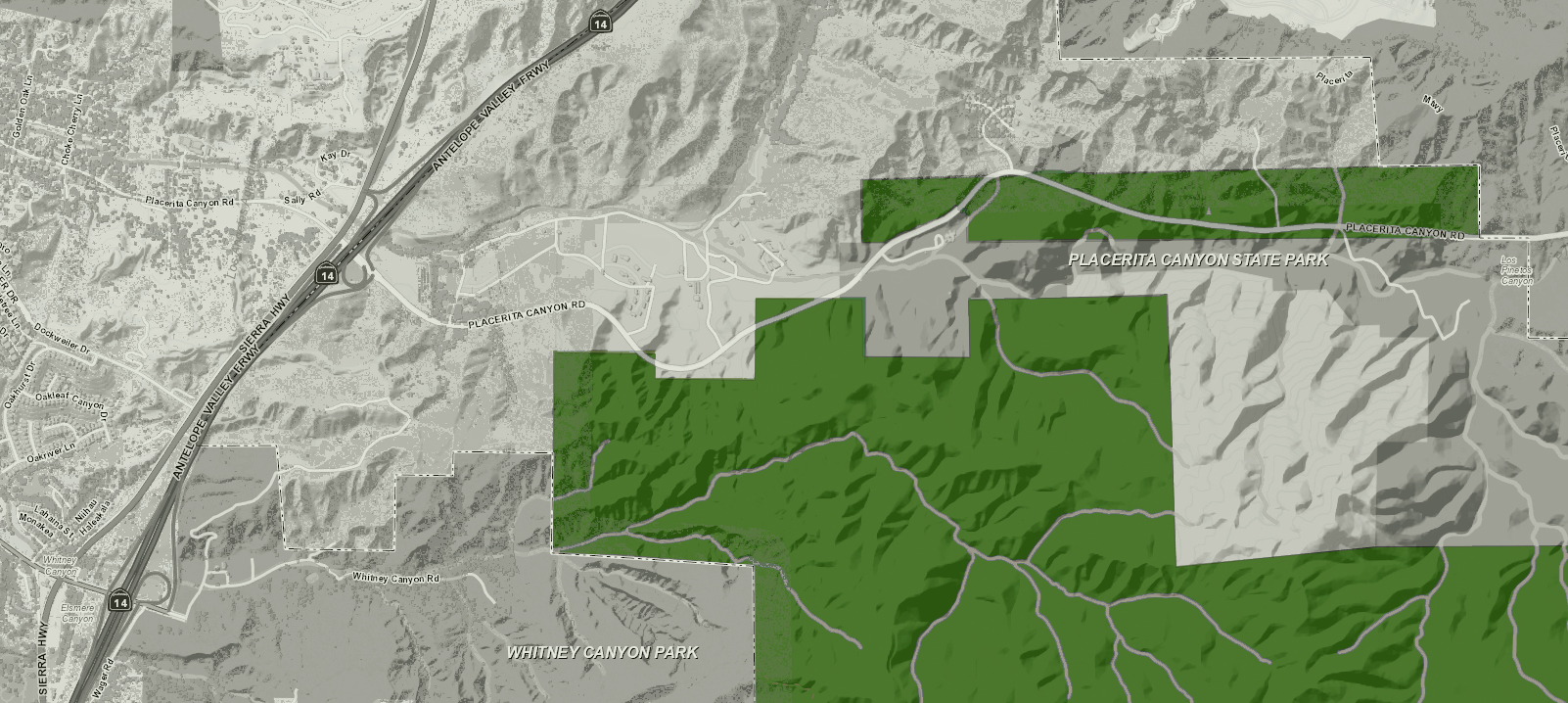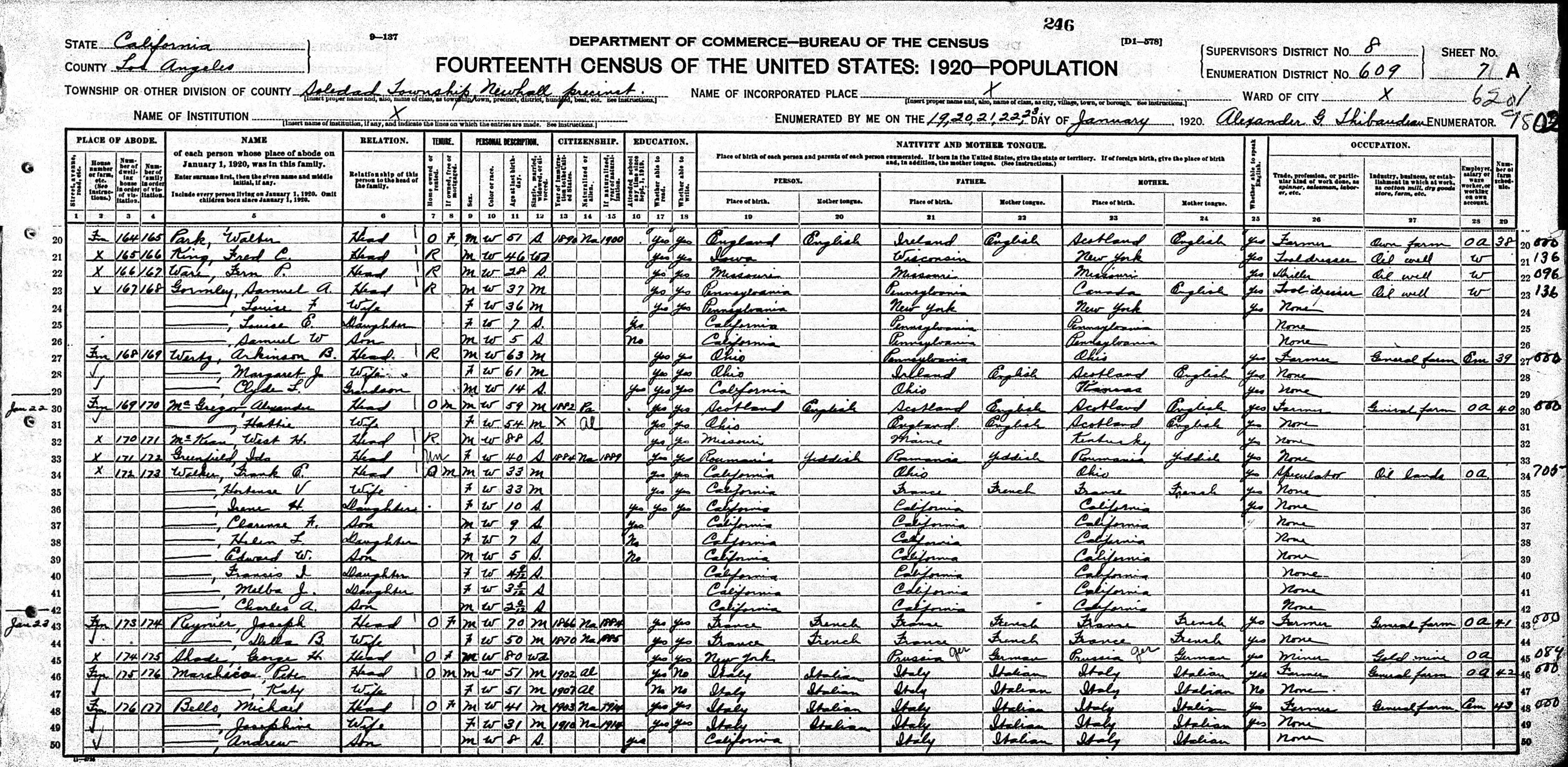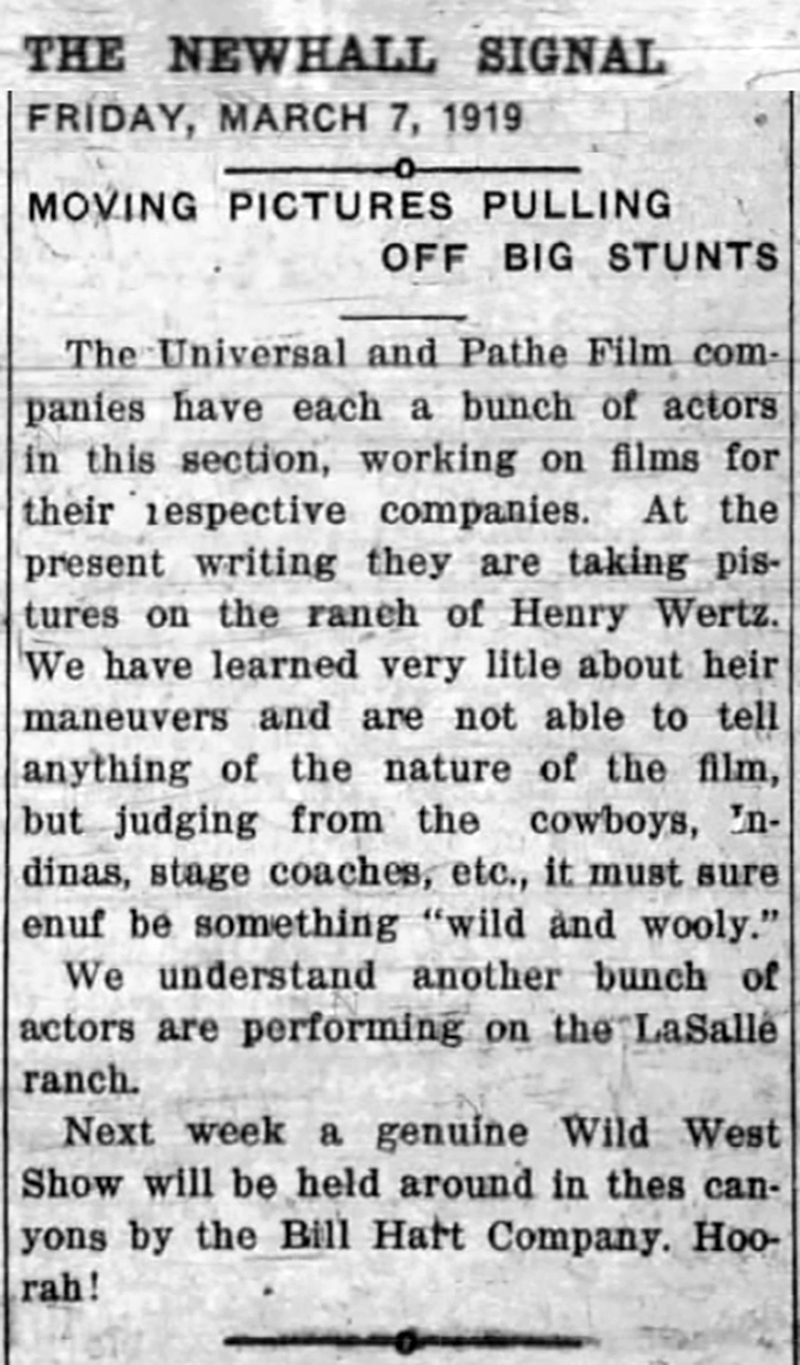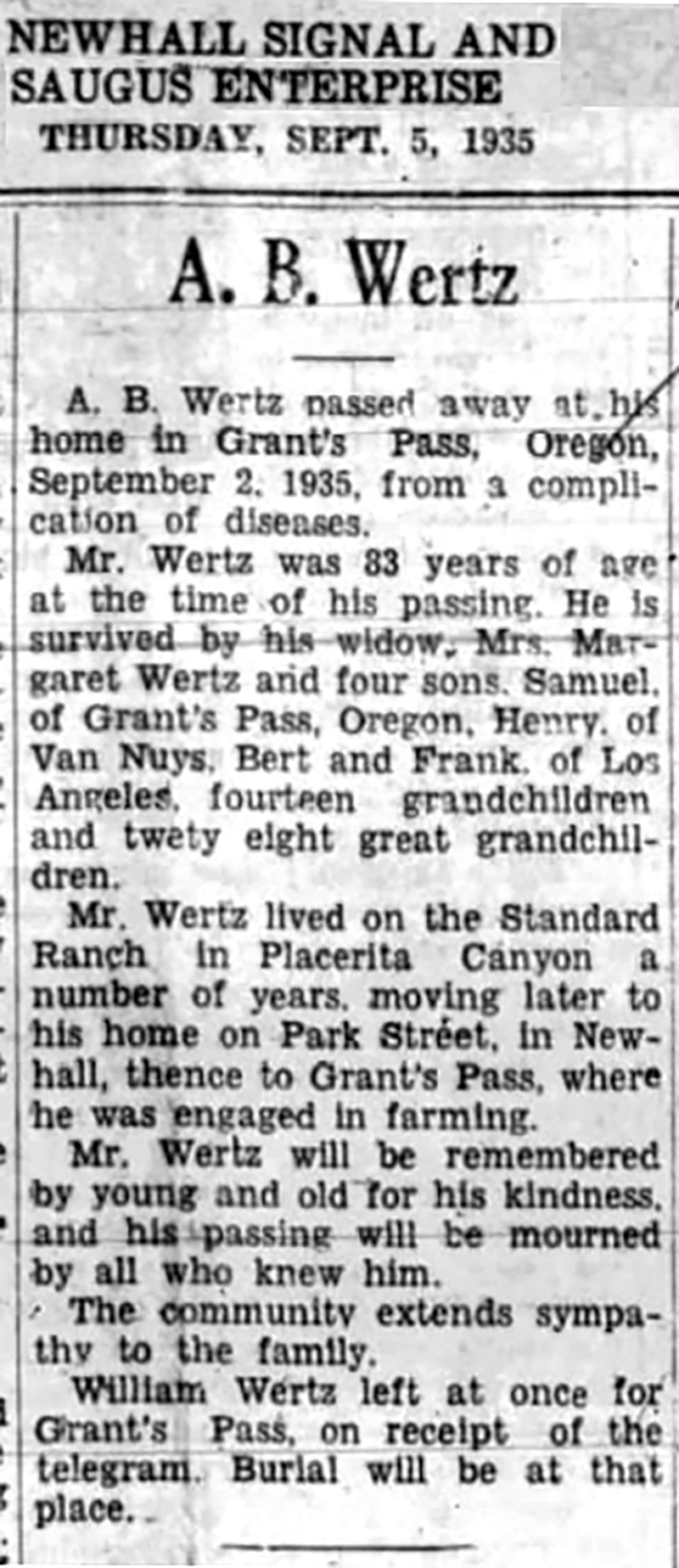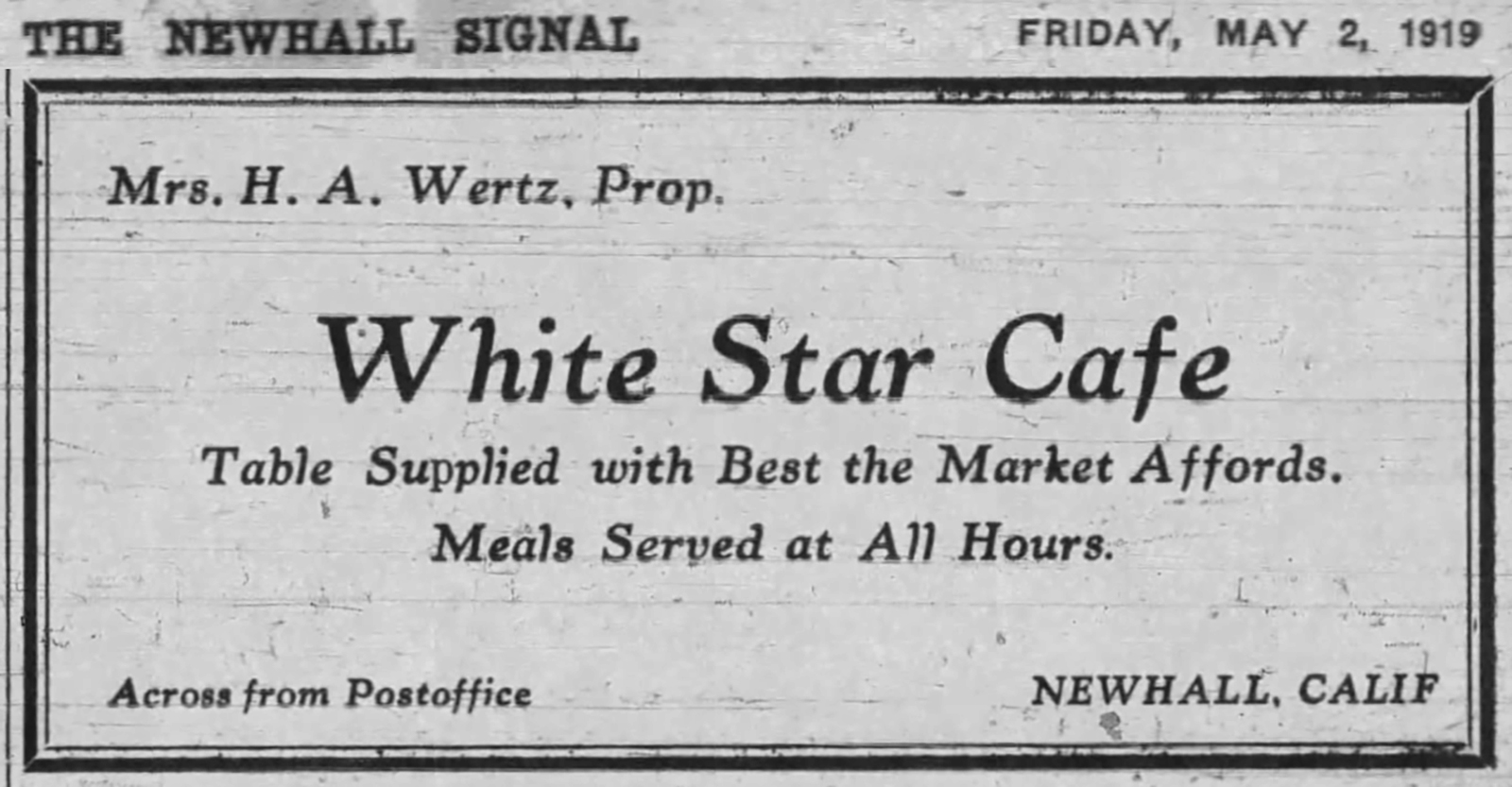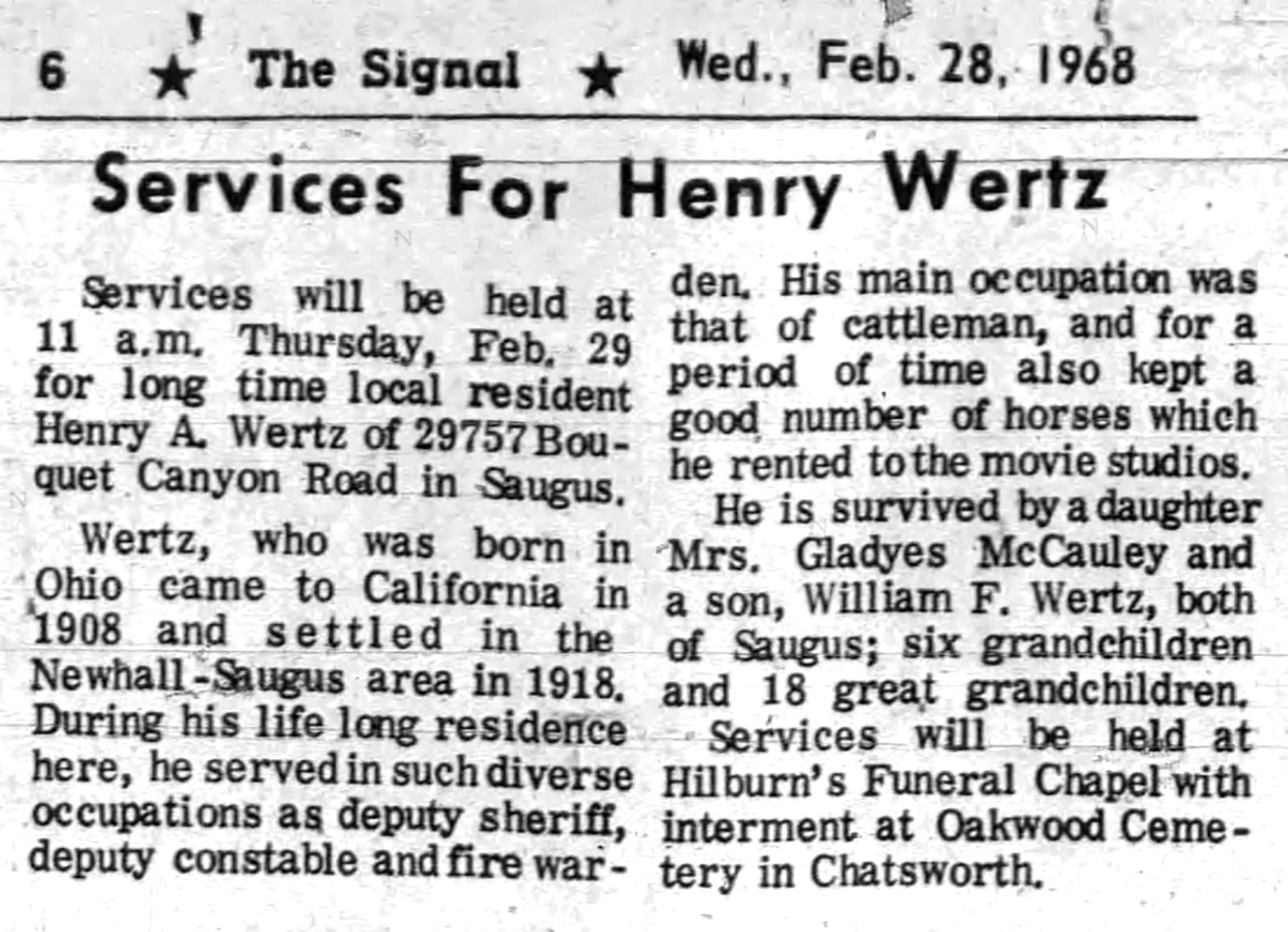|

Click to enlarge.
|
A William Fox film crew sets an old two-story, gable-roofed house ablaze on the Wertz Ranch in Placerita Canyon as a posse attempts to smoke out Tom Mix in the climactic conclusion of the 5-reeler, "Trailin'." The scenes were filmed Saturday, July 30, 1921, and the picture was released the following December 11.
According to The Signal (August 5, 1921), the house was located within the Santa Barbara National Forest — in the SCV, an old name for the current Angeles National Forest. Thus, "it was necessary to secure the superintendence of a forest officer before the burning could be done. Before the house was set afire, twenty fire fighters were stationed on the ridges surrounding the scene, armed with chemical extinguishers, shovels and sacks, ready to pounce on any sparks from the big blaze which might be carried to the neighboring hills."
In the clip shown here, we pick up the story where Tom, as the New York aristocrat Anthony Woodbury, and love interest Eva Novak are on the run from a posse of ruffians who think Tom killed a man during a shootout. Tom had come out West to hunt for a rancher named William Drew (James Gordon), who killed Tom's father in a duel. Or so Tom thought. Turns out, the man he knew as his father kidnapped Tom he was a baby from his real father — Drew — and from the mother he never knew. Tom and Drew come to terms in the final scene as the house is slowly consumed by flames in the background.
Where was the Wertz Ranch? The short answer is, we don't exactly know, but we can approximate. We do know it was located on a Standard Oil Company lease in Placerita Canyon (The Signal, September 5, 1935, et al.), and from the aforementioned Signal writeup, we know at least a portion of it was in the National Forest.
Born about 1852, Arkinson B. Wertz came to California from Ohio in 1908 and settled in Placerita Canyon in 1918 (The Signal, February 28, 1968: Henry Wertz obituary). From a history compiled by the Newhall librarian in 1940, we know that "previous to 1919," Arkinson Wertz "operated a Ford car up Placerita Canyon" as a school bus and gave Frank Walker's kids a ride to Newhall School.
The 1920 U.S. Census for Placerita Canyon appears to list the names of "farm" owners in order from west to east. We'll start with Walter Park on the west side of today's 14 Freeway. He homesteaded land between Placerita Canyon Road on the north and today's Dockweiler Drive on the south (see map, inset). Moving eastward, around today's Sierra Highway is Fred C. King, then Fern P. Ware, then the Samuel A. Gormley family. Then come Arkinson B. and Margaret J. Wertz, whose grandchild (one of 14) Clyde L. Wertz lives with them. Their neighbor to the east is Alexander McGregor, then West H. McKean, then Ida Greenfield, and then the Walker family, whose property straddled Placerita Canyon Road and included, among other things, the current Placerita Canyon Nature Center property and the Walker Ranch Open Space. Their eastern neighbor, just before Sand Canyon Road, is Joseph Reynier, then George H. Shade, then Peter Marchica, and then finally, in lower Sand Canyon, Michael Bello.
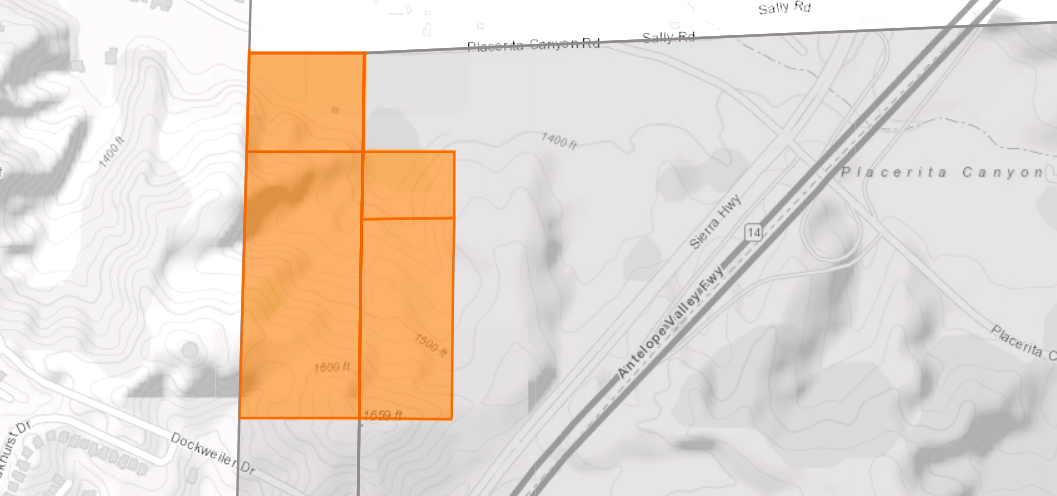
Our starting point for reference: The Walter Park homestead. Click to enlarge. This is not the Wertz Ranch. However, in 1922, Arkinson Wertz was witness to a legal notice whereby Park absolved himself of
responsibilty for "materal or labor" used on his property (The Signal, February 3, 1922). One must wonder whether the work being done was oil production or film production or both.
|
One thing this exercise tells us is that the history of filming in Placerita Canyon needs revision. The "recorded" history of filming in the canyon begins in 1928 with the establishment of the "Fat" Jones and Andy Jauregui movie ranch(es) on property they leased from Standard Oil.
But we know anecdotally that filming occurred a few years earlier, and now we have contemporary proof. In fact, the 1921 Tom Mix film wasn't the first. In just the fourth edition of The Signal, March 7, 1919 (The Signal published weekly starting in February 1919), it was reported that some curious filming activity was taking place on the Wertz Ranch:
The Universal and Pathe Film companies have each a bunch of actors in this section, working on films for their respective companies. At the present writing they are taking pictures on the ranch of Henry Wertz. [Arkinson's son Henry provided stock to film companies and may have been better known in the community than his father]. We have learned very little about their maneuvers and are not able to tell anything of the nature of the film, but judging from the cowboys, Indians, stage coaches, etc., it must sure enuf be something "wild and wooly."
We understand another bunch of actors are performing on the LaSalle ranch [in Wiley-Towsley canyons].
Next week a genuine Wild West Show will be held around in these canyons by the Bill Hart Company. Hoo-rah!
If Hart was filming here in March 1919, it was probably "The Money Corral" or more likely "Square Deal Sanderson" or "Wagon Tracks."
(It is possible the opening scenes of "Trailin'" use a cabin on the LaSalle Ranch or on Standard Oil property in Towsley Canyon. We'll leave that to the location experts to determine.)
Arkinson and Margaret Wertz had at least four sons: Samuel, Henry, Bert and Frank. Henry (born 1881) was a cattleman, a deputy constable and a state and county fire warden, and he rented horses to the movie studios. His wife, Mary, briefly ran the White Star Cafe across the street from the post office in Newhall; the couple opened it around the beginning of 1919 and sold it by July (The Signal, July 4, 1919). They eventually made their home in Saugus (29757 Bouquet Canyon Road), where Henry died in 1968.
One of Henry and Mary's sons, William F. (Bill) Wertz, Hart High Class of 1955, was the center on the football team who hiked the ball to Joe Kapp. Bill went on to run his own local construction contracting business.
As for the family founders, by 1930, Arkinson and Margaret Wertz had moved to 217 Park Street in Newhall (1930 U.S. Census), near the corner of Park and Race streets. Then they relocated to Grants Pass, Oregon, where Arkinson died September 2, 1935. He was 83.
Research assistance provided by Tricia Lemon Putnam. "Trailin'" starring Tom Mix is available on DVD from Grapevine Video.
Leon Worden 2020
|



